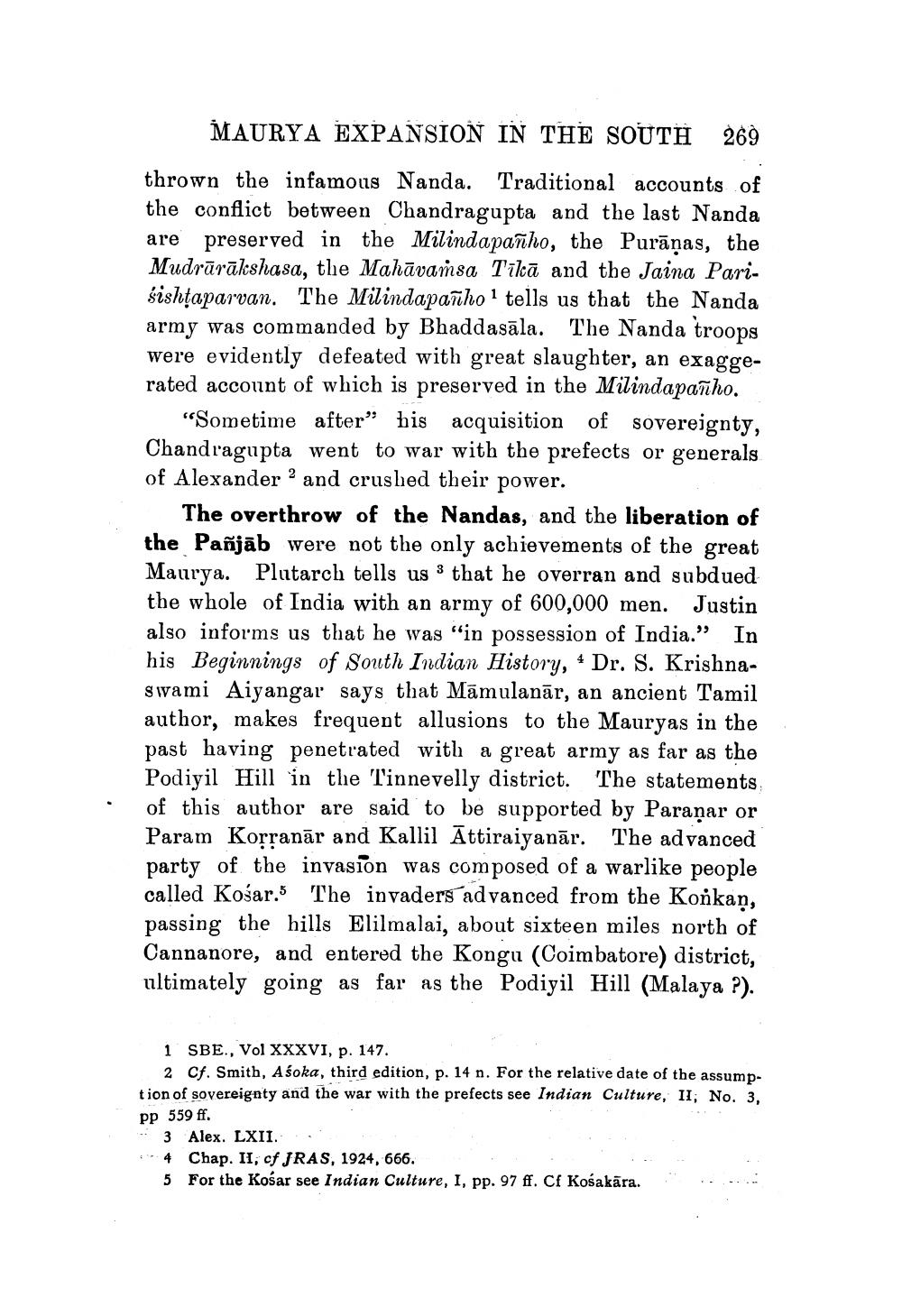________________
MAURYA EXPANSION IN THE SOUTH 269 thrown the infamous Nanda. Traditional accounts of the conflict between Chandragupta and the last Nanda are preserved in the Milindapañího, the Purāņas, the Mudrārākshasa, the Mahāvamsa Tīlcā and the Jaina Parišishțaparvan. The Milindapañho 1 tells us that the Nanda army was commanded by Bhaddasāla. The Nanda troops were evidently defeated with great slaughter, an exaggerated account of which is preserved in the Milindapañho.
"Sometime after” his acquisition of sovereignty, Chandragupta went to war with the prefects or generals of Alexander 2 and crushed their power.
The overthrow of the Nandas, and the liberation of the Pañjāb were not the only achievements of the great Maurya. Plutarch tells us 3 that he overran and subdued the whole of India with an army of 600,000 men. Justin also informs us that he was "in possession of India.” In his Beginnings of South Indian History, 4 Dr. S. Krishnaswami Aiyangar says that Māmulanār, an ancient Tamil author, makes frequent allusions to the Mauryas in the past having penetrated with a great army as far as the Podiyil Hill in the Tinnevelly district. The statements, of this author are said to be supported by Parañar or Param Korranār and Kallil Āttiraiyanār. The advanced party of the invasion was composed of a warlike people called Kožar. The invaders advanced from the Konkan, passing the hills Elilmalai, about sixteen miles north of Cannanore, and entered the Kongu (Coimbatore) district, ultimately going as far as the Podiyil Hill (Malaya ?).
1 SBE., Vol XXXVI, p. 147.
2 Cf. Smith, Asoka, third edition, p. 14 n. For the relative date of the assumption of sovereignty and the war with the prefects see Indian Culture, II, No. 3, pp 559 ff. - 3 Alex. LXII. . 14 Chap. II, cf JRAS, 1924, 666.
5 For the Kośar see Indian Culture, I, pp. 97 ff. Ci Kośakāra.




